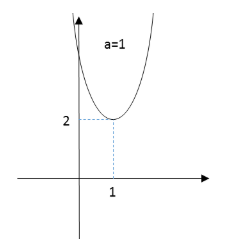[Math Revolution GMAT math practice question]
In the xy-coordinate plane, does y=a(x-h)^2+k intersect the x-axis?
1) h=1
2) k=2
=>
Forget conventional ways of solving math questions. For DS problems, the VA (Variable Approach) method is the quickest and easiest way to find the answer without actually solving the problem. Remember that equal numbers of variables and independent equations ensure a solution.
Since we have 3 variables (a, h and k) and 0 equations, E is most likely to be the answer. So, we should consider conditions 1) & 2) together first. After comparing the number of variables and the number of equations, we can save time by considering conditions 1) & 2) together first.
Conditions 1) & 2)
If a = 1, then the graph doesn’t intersect the x-axis shown as below.
Attachment:
 1231.png [ 5.04 KiB | Viewed 1594 times ]
1231.png [ 5.04 KiB | Viewed 1594 times ]
If a = -1, then the graph intersects the x-axis shown as below.
Attachment:
 12311.png [ 5.23 KiB | Viewed 1577 times ]
12311.png [ 5.23 KiB | Viewed 1577 times ]
Since neither condition gives us information about the value of a, conditions 1) & 2) are not sufficient, when considered together.
Therefore, the answer is E.
Answer: E
In cases where 3 or more additional equations are required, such as for original conditions with “3 variables”, or “4 variables and 1 equation”, or “5 variables and 2 equations”, conditions 1) and 2) usually supply only one additional equation. Therefore, there is an 80% chance that E is the answer, a 15% chance that C is the answer, and a 5% chance that the answer is A, B or D. Since E (i.e. conditions 1) & 2) are NOT sufficient, when taken together) is most likely to be the answer, it is generally most efficient to begin by checking the sufficiency of conditions 1) and 2), when taken together. Obviously, there may be occasions on which the answer is A, B, C or D.




